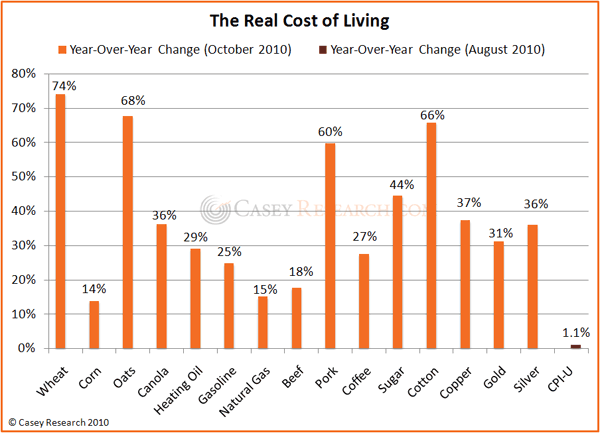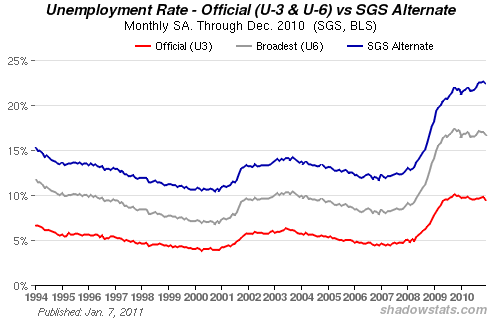It may have once been said “beware Greeks bearing gifts” today it could be said “beware of New Yorkers offering bonds” and this is indeed backed by history as the boys on wall street blew up the USA selling foreign debt to the retail public so when the debt crisis of 1931 hit anyone who was missed in the stock crash was crushed in the debt crash . . . sounds like history is rhyming again.
So what is happening today? Most people missed the equity run from the 2008 lows and many are still reluctant to get in and for good reason now. Bonds have ridiculously low yields and I believe the debt crisis is coming however this time it is “the big boys sovereign solvency test” when it begins the only place of high ground is precious metals. The other thing is when it does begin it will be ferocious and very quick so this is why I have a core position in Gold and Silver that I simply hold and do not trade.
This link is a great reference made by the Economist showing the GDP outputs of various countries compared to its closest US state – click here to see.
Why is that link important? It raised a question in my mind — Perhaps the only important question for 2011 is will anyone anywhere be spared from wealth destruction as the era of Quantitative Easing implodes?
It is happening already right before your eyes! Exhibit A is the fact that Irish Central Bank is printing money it doesn’t have to make loans that are secured by collateral that Irish lenders no longer possess. Irish borrowers can’t get money from the European Central Bank without collateral. So they’re getting it from the only place left, the nowhere land of fiat money.
If you read the story we’ve linked to at the Telegraph you’ll reach the same conclusion we reached: Europe’s debt problems will result in either default or increasingly absurd (and counterfeit) operations by Europe’s central banks (which were supposed to have surrendered monetary policy to the ECB upon monetary union).
How can a currency retain integrity when anyone can get permission to print more of it when times get tough? This is surely a sign that at some level, the Global Financial Crisis that began in 2007 is about to resume again. For 29 months the central bankers of the world have managed to prevent a reckoning with more loans secured by more questionable collateral. Is financial entropy beginning to reassert itself?
Here in Japan we certianly do not see inflation why? There is absence of inflation due to weak domestic demand but also rising currency: when the Yen softens, prices of imported goods will have to rise. Infaltion however is being seen in other smaller countries I am sure you will see more rioting in 2011 on rising food prices – this is not simply an “Africa thing” the next test will be in South East Asia and once infaltion takes hold it will spread.
The various powers at be tell us there is no inflation . . . Fiction: In this 60 Minutes clip Bernanke tells Scott Pelley, “The other concern I should mention is that inflation is very, very low…”
Fact: There is massive inflation!

Fiction: ‘Unemployment is 9.8%, if we didn’t take these drastic measures it would be 25% like it was during the Great Depression.’
Fact: Unemployment is, once again at “depressionary” levels – pushing 25%.

A Mess?
“By looking at Japan in the 1990′s and early 2000′s we can see the results of a Keynesian solution to a set of facts almost identical to our present situation. The “solution” caused a 15-year (1990–2005) stagnation of the Japanese economy. …
Here’s the Japanese experience which is startlingly similar to our present situation.
- They started with a huge credit expansion. Their discount rate was cut from 4.4% to 2.5% in 1986-1987.
- Real estate and equity prices soared.
- To counter the speculative boom, the discount rate was raised in 1989-1990 from 2.5% to 6% and their markets crashed.
- The Nikkei went from 40,000 in 1989 to 11,000 in 2005. Real estate values plummeted 80%.
- GDP grew at only 1.17% from 1992 to 2003.
- Unemployment went from 2.1% in 1991 to 4.7% by 2004 (a very high rate in Japan).
- Consumption and investment fell dramatically.
- Banks were not lending.
What was the response of the government to this crisis?
- In order to kick-start the economy, the government went on an infrastructure spending binge and cut taxes.
- From 1992 to 1995 they spent 65.5 trillion yen on projects and cut taxes.
- In 1998 they cut taxes 2 trillion.
- In 1998 they spent another 40.6 trillion on spending stimulus.
- In 1999 they spent another 18 trillion in fiscal stimulus.
- In 2000 they tried another 11 trillion spending package.
- They set up a 20 trillion fund to lend directly to businesses (the Financial Investment and Loan Program [FILP]).
- To try and push money into the system the Bank of Japan and Ministry of Finance bought more than half of existing government bonds from the private market at a cost of 2.22 trillion.
- Trying monetary policy, they lowered the discount rate from 4.5% in 1991, 3.5% in 1992, 1.75% 1993-1994, to 0.5% 1995-2003.
- They set up a $524 billion bailout fund in 1998 to buy stock in failing banks or nationalize them.
It is estimated that the Japanese spent about $1 trillion about (\135 trillion) to cure their financial problems. But the problems lingered, banks remained weak, lending and investment was severely reduced, unemployment was high, government debt went to more than 150% of GDP, and the yen devalued. Nothing seemed to work.
Remember some of the hallmarks of the Japanese experience? “Zombie Banks” were banks that the government allowed to keep their doors open although they were really insolvent. “Zombie Corporations” were the companies whose debt were held by zombie banks, but were allowed to stay in business because the zombie banks didn’t write off these loans. “Window sitters,” a term applied to workers of zombie companies who showed up for work every day for a paycheck, presumably gazing out the window all day with nothing to do.
The irony of it is that they are trying the same things again in this crisis, with the same results. The Bank of Japan just predicted two years more of deflation, and unemployment is up to 5.5%. Exports, the mainstay of their economy, are falling off a cliff (11 straight months of decline). It reminds me of a definition of insanity: expecting a different result to occur from the same input, over and over again.
Does the Japanese scenario sound familiar? It should since the USA is doing most of the same things as they did.
- The Fed reduced the Fed Funds rate to 0.25%.
- The government has hugely increased the base money supply in an attempt to create inflation.
- The government has spent or pledged about $2.7 trillion dollars in direct loans, bailouts, debt purchases, grants, and wasteful spending projects.
- The guarantees to Fannie, Freddie, Sallie, and the FHA, plus additional backstop guarantees by the Fed and the Treasury amount to almost $10 trillion.
- The Obama Administration expects the national debt is to increase by almost $10 trillion over the next 10 years (a very conservative number considering the new national health care plans). This will get us to a national debt of about 200% of GDP.
- Programs like Cash for Clunkers, Cash for Refrigerators, and Cash for houses are trying to stimulate consumer spending and increase consumer debt.
- Like Japan, mark-to-market accounting requirements for banks have been partially suspended.
- The Fed has been directly financing corporations through its commercial paper lending window.
- TARP, TALF and the host of other programs were implemented to keep bankrupt institutions afloat.
- They have been buying stock in financial and commercial companies.
- They have been buying U.S. debt, effectively partially monetizing the deficit.
It is not surprising that these policies have led us to many of the same results as Japan experienced:
- Deflation.
- Collapsing real estate values.
- A shrinking money supply.
- Decreased bank lending.
- Falling consumer spending.
- Falling consumer credit.
- Increased federal debt.
- Falling GDP.
- High unemployment.
One might ask, with all this faith in Keynesian policies, why aren’t they working? And, why aren’t we doing something different than Japan?
The reason the economy is not responding is that there is too much bad debt sitting on the books of lenders and companies. Most of it is related to the real estate bubble: home mortgages, commercial real estate loans, consumer debt, and the derivatives and other products that sit on top of it.
Banks are afraid to lend or foreclose on bad debt unless they are forced to because they know they will need to come up with additional Tier 1 capital because their capital base is insufficient. Because credit is tight, home owners are finding it difficult to refinance their loans because of stricter underwriting standards while home values are falling. CRE loans are even more difficult because commercial financing has largely dried up for troubled projects.
And, consumers aren’t borrowing because they are (i) afraid of their economic future, and (ii) the big spenders, the Boomers, don’t have enough saved up to retire, so savings are going up.
This is why banks aren’t lending. As a result, money supply is falling. This will continue until the debt situation is resolved, but the government is doing everything it can to frustrate these corrections because they know the cure (tight money) will cause more banks and business to fail. But unless the debt is removed, liquidated, or paid, banks will remain zombies.
If we are following Japan’s remedies, will we experience Japan’s economic results? This depends on a lot of factors, mainly how the government reacts to economic phenomena. But, all things being equal, I think there are several key differences and similarities between the U.S. and Japan that will determine a different outcome.
Bernanke will teach the Japanese a lesson in the proper way to run and economy? He will pump money until we have inflation because he fears deflation more than inflation. Because he doesn’t understand the real lessons of Japan, we will have stagflation, and his successor will probably try the same failed remedies to save us from that too.” By Jeff Harding
It will be a mess . . .
However let’s look at one example that is current and seems to have worked – Iceland!
You may remember, two years ago Iceland was a mess. Its banks had borrowed, lent, and speculated recklessly. At first, the government decided it would do what Ireland was doing. It would rescue the banks…that is, it would bail out the banks’ lenders with public funds.
But when the public caught on to what was going on, a referendum was held. Voters rejected the bailout, more than 90% of voters cast ballots against a taxpayer bailout. Unable to stick the voters with the losses, the government left the banks to default.
Was this the end of the world? Did Iceland slip below the North Atlantic waves…joining the Titanic on the chilly, dark bottom of the sea? Did commerce break down? Did the Icelandic money become worthless?
Nope.
“Iceland is faring much better than anybody expected,” reports Bloomberg.
Inflation fell from 18% down to 5% last year. The cost of insuring Icelandic debt fell to less than a third of the price in early 2009. Unemployment is barely 6%.
“Thanks to its rescue plan,” says the IMF, “the recession in Iceland has been less deep than expected and not worse than in the other countries deeply affected.”
The IMF in my opinion is taking glory for doing nothing!
As no one would lend Iceland any more money. And once the public revolted, after realizing that it would be left holding the bag, the Icelandic feds had no choice. They were forced to go with the following;
- The foreign debt was consolidated into a few banks…which then went broke.
- The remaining banks were left intact, ready to keep the country’s financial machinery in business.
Lesson learned: got too much debt? Default quickly. Make it clean. Make it fast. Make it work.
Somehow I doubt the Europeans and the Americans are going to take this route, that is until the market forces this outcome . . . time will tell.



